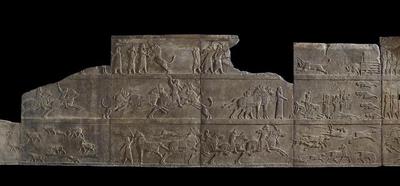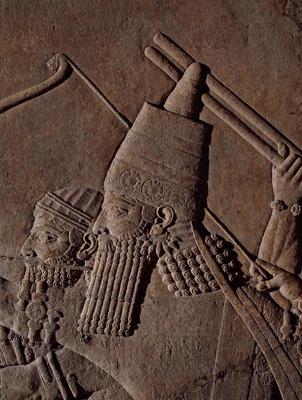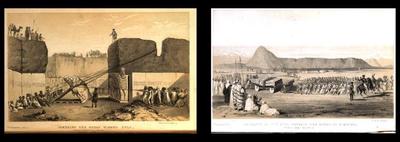Lion Hunts in the Wild Orient

The BBC recently published an essay by Kelly Grovier titled “The Lion Hunt of Ashurbanipal: The 2700-year-old ‘fake news.'" Written in an authoritative tone and flowery style, the article is a mixture of factual errors and orientalist clichés which would easily be at home with the worst of nineteenth-century narratives describing the “exotic Orient.”
This Assyrian relief is “fake news,” the writer claims, because it “certainly [is] not what it at first purports to be, a celebration of the king’s success in defeating an onslaught of lions in the wild.” On the contrary, Ashurbanipal’s lion hunt was a ceremonial undertaking performed by the king and his heir in a controlled setting, not in the wild. Far from “put[ting] paid to that propaganda,” the images of lions let out of cages were an integral part of the carefully designed sculptural program commissioned by the king himself. The writer’s misrepresentation not only gives the article its misleading title, but also sets the tone for the rest of the piece which indulges in superficial tropes and eschews even a cursory engagement with the particularities of ancient socio-political contexts.
The writer’s main “argument” centers around Ashurbanipal’s earring which allegedly “unlocks the secret symbolism” and “reveals the true meaning of Assyrian reliefs from the 7th-century BC.” The Da Vinci Code reloaded… The earring shape in question was quite common and in no way reserved to lion hunt scenes. When the writer argues that the earring’s significance “reveals itself” and “becomes a crucial puzzle piece […] in rescuing Ashurbanipal himself from eternal futility,” I wonder whether this sort of nonsensical, animistic language can itself ever be saved from “eternal futility.” While the Vermeer comparison and the remark about the earring’s “suggestive potential” ultimately remain unintelligible, they are in line with the sensationalist approach that the writer consistently takes to “decode” artworks for this BBC series. In this particular instance, such statements seem to draw on stereotypes of an oriental despot, at once sexualized and decadent, who “might well […] rip the earring loose, and fling it like a makeshift Ninja weapon at his feline foes.”

The writer also connects the “sustained stretch of soggy weather in Mesopotamia in the middle of the 7th Century BC” with the surging number of lions, which in turn supposedly facilitated the creation of these reliefs. However, the lion hunt theme was not only used by Ashurbanipal’s predecessors two centuries earlier, but is also one of the oldest motifs of kingship and actually dates to at least the fourth millennium BC. In fact, lions survived in modern-day Iraq well until the late nineteenth century, though chiefly along riverbanks and not in “lush hills” as the writer confidently proclaims. Rather than relying on unfounded generalizations, which is often a marked feature of orientalist writing, the writer would have benefited from following the advice in their article’s opening: “If you want big answers, start small.”
It is also ironic that here the indigenous archaeologist Hormuzd Rassam finally steps out of the British archaeologist/diplomat Austen Henry Layard’s shadow only to be made single-handedly responsible for removing these reliefs. It is worth noting that large-scale European excavations in general, and British excavations of Assyrian sites in particular, were intertwined with the history of colonialism in the region and backed by imperial institutions. Therefore, the “remarkable achievement” that the writer talks about should be ascribed first and foremost to British colonialism, rather than to Rassam exclusively.
I do not expect sophisticated reasoning from these types of pieces but the comfort with which such mystical and exoticized narratives of a despotic East are circulated today is rather alarming. If there is any “archaic form of fake news” to be found here, it is certainly not the relief but the article itself.
